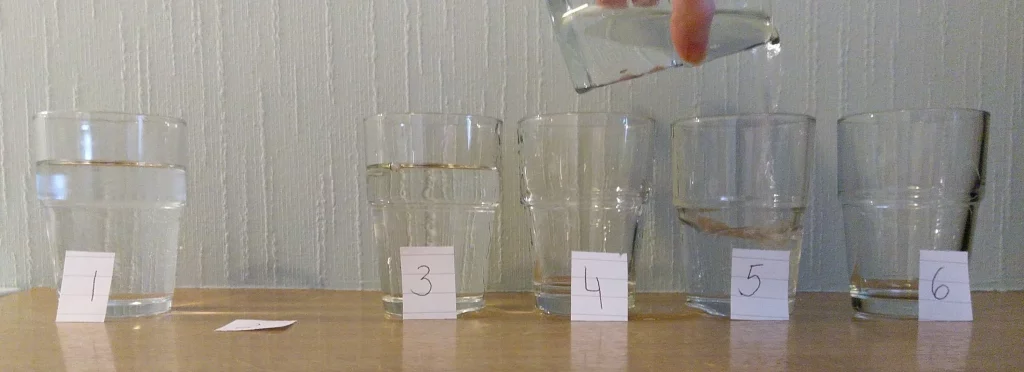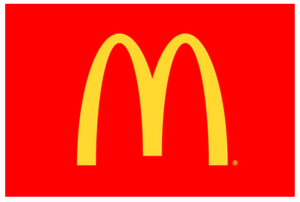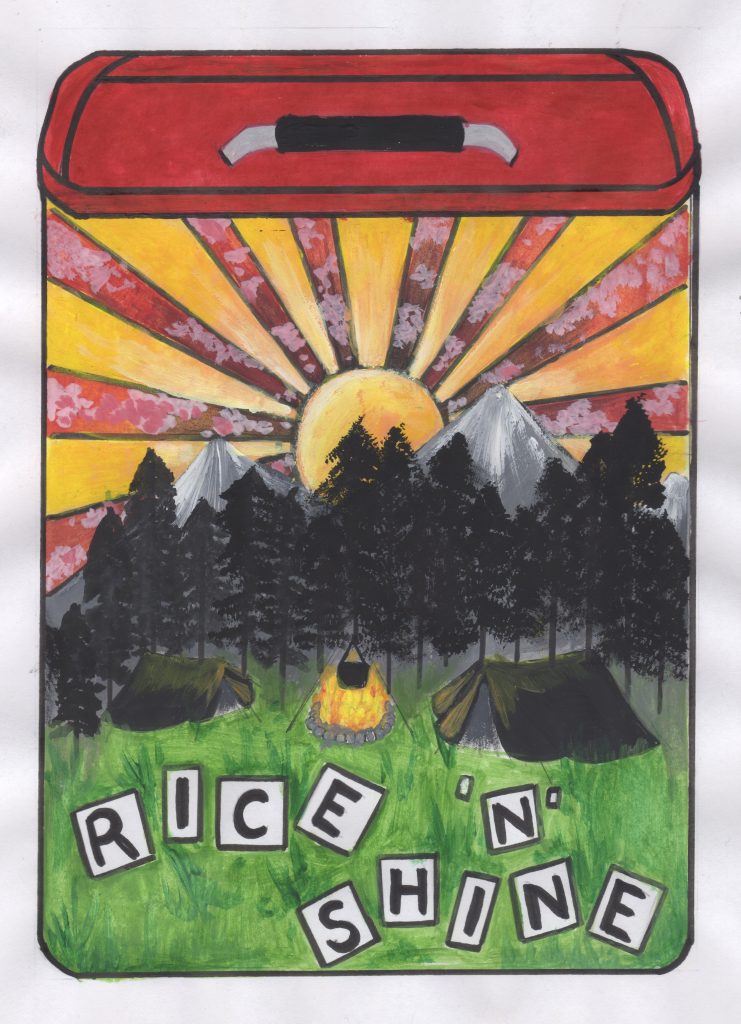IDEA DEVELOPMENT
Puzzles & Fun
Brief: Solve each of four given riddles, either on you own or as part of a group.
I decided to give them a go on my own to test myself and exercise my brain.
1. A man is replacing a wheel on his car, when he accidentally drops the four nuts used to hold the wheel on the car. They fall into a deep drain, irretrievably lost. A passing girl offers him a solution that enables him to drive home. What is it?
The information I have gathered is that the car now has only three wheels attached and that the nuts are irretrievable. There’s likely many possible solutions to this riddle, but my own possible solutions are the following:
– The man is replacing the wheel just outside of his house/in the driveway, therefore, does not need to drive anywhere.
– The girl suggests that the man take one bolt off of each of the three remaining wheels to re-attached the fourth wheel.
– The girl offers to drive him home.
– The car is not a real car, but in fact, an RC car.
2. Two Russians walk down a street in Moscow. One Russian is the father of the other Russian’s son. How are they related?
So far, we only know for certain that one of the two Russians is male, leaving the other Russian’s gender unspecified, therefore, it’s possible that they are female. There is always the chance that the other Russian is also a male. Either way, the solution I came to is that they are married/share a child together.
3. What occurs once in June, once in July and twice in August?
For this riddle, I tried to come up with other solutions than the obvious. For example; perhaps there’s the possibility that a full moon could occur twice in August? But in the end, the answer is just plain and simple – The letter ‘u’.
4. Six drinking glasses stand in a row, with the first three full of water and the next three empty. By handling and moving only one glass at a time, how can you arrange the six glasses so that no full glass stands next to another full glass, and no empty glass stands next to another empty glass? What is the minimum number of moves to solve this puzzle?
For this fourth and final puzzle, I decided to take a practical route to help me figure it out, and found two possible solutions. My first solution allowed me to solve the puzzle in three moves and my second solution only took one single move. I took photos to show a step-by-step solution:
Solution 1




Solution 2


Problem Solving - Part 1
Brief: Apply the SCAMPER technique to a teaspoon.
This was not an easy task, I’ll admit. I tried to think outside the box whilst still being realistic. I’ve given a brief explanation for each idea and how it could be used.
Substitute
Flat head for a scooped head: Being English, I like to dip biscuits into my tea, and unfortunately, sometimes the biscuit is lost to the deep, dark, hot, and steaming contents of my drink. Have you ever taken a mouthful of overly tea-soaked biscuit? It’s not great. Having a scoop on the end of the spoon makes it all the more easy to remove the biscuit before it crumbles apart.
Combine
A small tube: The tube could be designed to contain small granules, such as sugar, for a quick and easy way to add to your hot drink. The tube would have a small latch where the handle meets the spoon’s head, controlled by a small button on top of the handle to release the grains.
Adapt
Compaction: A teaspoon that folds up, making it compact for on-the-go uses, such as for camping, hiking or on an out-door festival.
Modify or Magnify
A head-proof handle: Teaspoons are commonly used to stir hot drinks. The metal handle can quickly heat up. Having a heat-proof handle will avoid any possible burning.
A small hook: Sometimes the spoon can fall into the drink if the cup is too big. Having a hook at the end of the handle, you could hook it over the edge of the cup.
Put it to Another Use
Mirror: Most of the time, after drinking a hot beverage, a majority of my lipstick melts off. Using the spoon as a mirror, you could check and reapply your make-up in no time.
Eliminate
Metal: Thinking of the environment here. Metal is hard to recycle. How about having teaspoons made of bamboo? They are reusable and non harmful to our earth. This could also be applied to “substitute”, but I was having a hard time thinking of what could be eliminated from a teaspoon whilst still keeping it an actual spoon.
Rearrange or Reverse
To literally reverse a teaspoon wouldn’t make a huge difference, unless you wish to create a water fountain under your kitchen tap. However, creatively thinking – Removable Parts: The head and the handle of the spoon can be separated, allowing other sized spoon heads to be attached, or even a fork head or blunt blade to be used as a small knife for spreading.
Problem Solving - Part 2
Brief: Research the history of McDonald’s and explain which parts of the SCAMPER method are evident in its development onto the huge success it is today.

Substitute
In 1937, Patrick McDonald opened “The Airdrome”, a fast food stand in Los Angeles, California, selling hot dogs, with hamburgers later added to the menu. In 1940, his two sons, Maurice and Richard moved the business and renamed the restaurant “McDonald’s Bar-B-Que”, with the menu now consisting of twenty-five items. They later renamed the restaurant once again to “McDonald’s”.
In 1980, McDonald’s introduced the McChicken. It didn’t sell well and was replaced with Chicken McNuggets.
Combine
In 1972, the Egg McMuffin was introduced, combining the burger form and breakfast food together. Five years later, an entire breakfast menu was added.
In 1979, the Happy Meal, a combo meal for children featuring a toy, was added to the menu. Braille menus were introduced the same year, followed by picture menus nine years later. A combination of the two menus were reintroduced later in 1992, to accommodate those with speech, vision, or hearing impairments.
Adapt
In the 1990s, the first McDonald’s opened in the Middle East. The menu was altered to adapt to local food preferences and customs, using Halal menus, which complied with Islamic laws for food preparation.
McDonald’s opened its first drive-thru window in Arizona, in 1975, for a quick and easy way for customers to order without having to step out of their car.
In 2015, McDonald’s adapted to modern day society by introducing touch-screen kiosks, to minimise queuing.
Modify or Magnify
In 1948, the McDonald’s brothers established a system with a simple menu, consisting of only hamburgers, cheeseburgers, potato chips, coffee, soft drinks and apple pie. After one year, potato chips and pie were swapped out for french fries and milkshake. Over the years, the McDonald’s menu has been modified, adding many new items. The Fillet-O-Fish, the Extra Value Meal and the McFluffy, to name a few.
From what started as a small family business, McDonald’s gradually began to expand, with restaurants opening not just in every US state, but all over the world.
In 1956, Ray Kroc purchased the rights to McDonald’s and met Harry J. Sonneborn, who offered Kroc an idea to accelerate the growth and investment grade of his operation: To own the real estate that future franchises were to be built on. To this day, McDonald’s real estate holdings represent $37.7 billion on its balance sheet.
Put it to Another Use
In 1974, McDonald’s opened its first Ronald McDonald House in Philadelphia, providing a place to stay for the families of children in nearby hospitals.
In 1990, McRecycle USA started up and committed to purchasing recycled products for use in construction, equipment, and remodelling of McDonald’s restaurants. All furnishings, washroom tissue and even packaging are all made from recycled products.
Eliminate
During McDonald’s early years, carhops were used to serve customers in their cars. They were eventually eliminated in order to make the restaurant self-service.
In 1991, the McLean Deluxe Sandwich was introduced in an attempt to feature a burger patty containing less than 10% fat, but was dropped from the menu five years later to make room for the Arch Deluxe.
In 2002, due to quarterly loss, a major reconstruction was announced, resulting in the closure of over seven hundred restaurants and the elimination of hundreds of jobs.
In a move to simplify and offer a less fattening menu, McDonald’s announced to phase out Super Size french fries and soft drinks by the end of 2004.
In 2018, the restaurant banned the use of plastic straws across its UK and Ireland chains.
Rearrange or Reverse
In 1952, McDonald’s appearance was redesigned to change the establishment from a sit-down restaurant into a fast food chain.
Between the 1960s and 1990s, the goal of the business had been to quickly serve customers and not force them to stay in the restaurants any longer than it took them to eat a hamburger, with the restaurants having had been furnished with uncomfortable seating. In 2006, McDonald’s restaurants were remodelled, featuring different types of dining zones to accommodate their customers, wether they were inclined to hang about or eat and go, as well as a zone for groups and families to dine in comfort.
Problem Solving - Part 3
Brief: Design a packaging for rice. Applying each one of the SCAMPER techniques, and write up your findings, then choose one option that you think would work best, including a sketch of what the packaging would look like.
Substitute
The shape of the packaging. Instead of big bags or boxes, have long, thin cylinders with resealable lids that can be tucked away in a drawer or stand nicely on the kitchen counter, freeing up cupboard space for other things.
Combine
Flavour. Rice is plain and tasteless, unless you add herbs and/or spices to it. For example; noodles usually come with a small sachet to add flavour. I’d like to add such a thing to rice packages.
Adapt
As a kid, I never wanted to each my rice. It was boring and unappealing. A harm-free colouring that can be added to the water to make it more exciting for kids. Who wouldn’t want to eat purple rice?!
Modify or Magnify
I would modify the packaging to contain different portion sizes. Being someone who is usually cooking for one, I find that the boil-in-a-bag rice portions are just far too much for one person. Or to perhaps include a small cup inside of the bigger packages to measure out portions.
Put it to Another Use
Instead of throwing out the empty packaging, you could use it as scrap material for arts and crafts, or use it to re-package other food, such as flour, or oats.
Eliminate
Regular plastic packaging and swap to eco-friendly/recyclable plastic or biodegradable material.
Rearrange or Reverse
Rice for outdoors, such as camping. No bowl or pans required. The packaging is water-resistant and reusable, with an airtight, detachable lid.

Rearrange or Reverse
This is my packaging design that I decided to call “Rice ‘n’ Shine”. It is designed for outdoor use, such as for camping or hiking. No bowl required. A reusable stainless steel tin, with a detachable airtight lid. The contents of the package include: 8 boil-in-bag bags of rice, 8 sachets of salt, 1 reusable wooden tablespoon, 1 heatproof pouch, 1 draining lid. Simply boil up some water over a fire or gas cooker, slide the heatproof pouch over the tin to prevent burning your hands, pour the water into the tin with a boil-in-bag of rice, add a sachet of salt, secure the airtight lid and wait 10-12 minutes for your rice to cook. Take off the lid, attach the draining lid to drain out excess water, wait for it to cool and eat straight from the tin.
